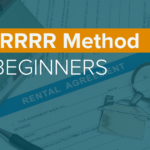Rental Market Introduction
This summer, rents reached at an all-time high. Rent increased in 88% of the 250 biggest US cities, stayed the same in 10%, and dropped in only 2%. The average rent in June 2018 was $1,405 – a 2.9% YOY increase from June 2017.
However, the rate of rental growth is slowing as occupancy rates fall, especially for single family rentals. As a result, it is imperative for investors to install stand-out features to make renters pay attention. Additionally, once you have tenants in the door, resolve issues quickly and don’t neglect your property. The better you serve your tenants, the more likely they are to sign a new lease once their term is up.
Additionally, the demographics of the rental market are also shifting; Baby Boomers’ children are leaving home allowing their parents to move from the suburbs back into the cities where they’re choosing to rent rather than buy. The senior market is also growing as the number of citizens over sixty-five continues to increase rapidly; this population will double by 2060.
Rental Property Statistics
[su_row][su_column]
Cities with the Fastest Growing rents:
- Orlando, FL: 6.2%
- Las Vegas, NV: 4.9%
- Tampa, FL: 4.6%
- Corpus Christi, TX: 4.4%
- Knoxville, TN: 4.3%
Cities with the Fastest Declining Rents:
- Seattle, WA: -2.0%
- Louisville, KY: -2.3%
- Portland, OR: -3.1%
- Providence, RI: -3.1%
- Baton Rouge, LA: -4/2%
[/su_column][su_column]
Highest Potential Annual Gross Yields:
- Baltimore County, MD: 28.6%
- Bibb County, GA: 21.8%
- Montgomery County, AL: 21.7%
- Wayne County, MI: 21.7%
- Clayton County, GA: 20.3%
Forbes: Where to Invest (Link)
- Orlando, FL
- Provo-Orem, UT
- Jacksonville, FL
- Raleigh-Durham, NC
- Ogden-Clearfield, UT
- Nashville-Davidson-Murfreesboro, TN
- Atlanta-Sandy Springs-Marietta, GA
- Springfield, MO
- Fort Worth – Arlington, TX
- Sacramento-Arden-Arcade-Roseville, CA
[/su_column][/su_row]
Types Of Rental Properties
Single Family Homes
Single family rental investments are often recommended for beginners; they are cheaper and far easier to manage since you only have one family to deal with. Additionally, you save money on expenses because tenants typically pay for all utilities. If you plan to eventually sell, you have a wider base to market to because single family properties are attractive to both homeowners and investors.
The flip side of this is that with a single unit, you have a greater risk of total vacancy and periods of zero income; additionally, it is typically not worth it to hire a property management firm so the owner will also need to act as the landlord.
Multi-Family Homes
With multi family rentals, real estate investors experience greater total income because they have more units to collect rent from. An investor with a four-bedroom single family cannot charge as much per room as an investor that has a two-family with two bedrooms per unit. Additionally, multi-families generally have a higher ROI for renovations. If you upgrade the building, the rent on each apartment goes up.
Multi families also lend themselves to building a large rental portfolio; while with single families each purchase only brings in one new unit, with a multi-family you can acquire dozens of units in a single purchase. This also means you are less likely to experience a zero-cash flow situation; since there are more units to rent out, there is less risk of total vacancy.
If you are investing in a property with four units or less, you can benefit from the same low rates that families get on home mortgages. If your property has five or more units, however, you are required to obtain a commercial loan with a higher interest rate to finance your investment long-term.
Long Term vs. Short Term
The biggest benefit of long-term rental investment is the lack of vacancies. Your tenants will sign leases for anywhere from six months to a few years, all but guaranteeing you full occupancy for the length of the lease. If the tenants do decide to cut their lease short, they will owe you damages for breaking the contract. This also means that you have less paperwork to worry about. While there is a lot of legal leg work before the lease is signed, once the tenants move in the legal paperwork is kept to a minimum.
Tenants often pay lower rates in exchange for their commitment to remain in residence for an extended period of time. If you are in a high-demand rental location where you could make enough to cover a long-term tenant’s yearly rent during the tourism season, the up to 40% discount associated with long-term renting may not be worth it.
With long term renting, you also have obligations to fix issues in a timely manner. If the plumbing or electric need repairs, you cannot wait until it is financially convenient to solve those issues. You are legally obligated to keep the unit safe and habitable for your tenants.
There is also the danger of problematic tenants; if there are issues with the tenants in a long-term lease, it is much harder to get out of the agreement and you may end up stuck in a poor situation. Another issue with long-term rentals is that you do not have as much flexibility as with short-term rentals. Just as the renters are obligated to remain in your unit for the lease term, you are obligated to maintain the unit for that term. You cannot evict them to make the property more desirable to buyers or abandon the investment if it becomes inconvenient.
Short-term rentals offer much more flexibility than long-term rentals. At peak season, tourists are often willing to pay multiple times the base rent of your unit. In high demand spots, you can often make your full annual rental income in just a few weeks; in the off-season, you can discount your rate to try and draw in occupants for some extra cash.
Additionally, some rental property owners like to keep their property for a few weeks a year to share with friends and family or use themselves; with a short term rental, you can block off the time you will use your unit and have a vacation home as well as a rental property. However, don’t be overzealous about blocking off time for yourself or your rental income will end up simply mitigating the cost of your own vacations rather than generating profit.
Some of the downsides of short-term rentals are increased vacancies, legal complications, increased paperwork volume, and more involvement on your part to draw in renters and get them settled.
The legal restrictions associated with short term rentals vary wildly by location and type of rental. In some locations, it is illegal to offer short term residencies – for example, in New York City, apartments in multi-unit buildings must be occupied by the same person for at least 30 consecutive days. In the French Quarter in New Orleans, home or apartment rentals must be at least 60 days. Review the laws in your specific area before you decide to add a short-term rental to your portfolio.
You also need to put together and sign more paperwork, as the unit keys will change hands more frequently. To keep units occupied, you need to be proactive about upgrading outdated features, adding attractive amenities, and marketing your property. Short-term rentals may have a higher profit potential than long-term rentals, but that higher potential typically comes with a lot more effort on your part.
Keys To A Successful Rental Strategy
Hire a property management firm.
If you plan on growing your rental operation, you will eventually need a third party to manage your rentals for you. When you start out, especially if you begin with a single family home, it may not be financially feasible to hire someone else to manage the day-to-day. As you acquire more units, however, a property manager is a must so that you can focus on your executing your investment strategy instead of doing maintenance.
Keep the home updated.
Since short-term renters are committing to a temporary stay and often have a vacation mindset, they are willing to pay extra for top-notch features like a pool, a home bar, or a game room. Install “listing bait” features to draw attention and keep everything up to date, clean, and in tip-top shape. Online ratings can make or break a short-term rental on sites like Airbnb and your rating dictates how much people are willing to pay for your space.
Ask tenants to enroll in an automated payment system.
Paper checks notoriously get “lost in the mail” and frequently come a few days (or months) late. In the short term, there is little landlords can do to force renters to pay, besides implement late fee policies. Late checks raise tension in the landlord-renter relationship. With modern automated pay systems, there is no need to deal with any of that.
If your tenants set up their rental payments with ACH or PayPal, you’ll never have to deal with a late rent payment again. There are also an assortment of new software programs for landlords that help automate the rent collection process.
Choose an up-and-coming location.
The best rental properties appreciate in value in the background, while the owner collected rents from the tenants. If you choose the right location, your property value can dramatically increase in value in a matter of years. In 1996 San Francisco, the average home price was $342,600. In 2016, it was $810,200. Accounting for inflation, that is an average increase in value of $286,100 across San Francisco. In growing metros with high job prospects and an improving standard of living, investing in properties early and holding onto them for several years can provide great returns on investment.
High Value Amenities
The National Multifamily Housing Council surveyed residents to determine what percentage of renters desire certain top amenities, and why they choose to rent instead of buy.[su_row][su_column]
In Homes:
- High Speed Internet: 91%
- Walk-in Closet: 89%
- Soundproof Walls: 88%
- Balcony or Patio: 87%
- In-Unit Washer and Dryer: 87%
In Communities:
- Parking: 94%
- Pool: 83%
- Fitness Center: 82%
- Secured Community Access: 80%
- Recycling: 80%
[/su_column][su_column]
Why Rent?
- Convenience and flexibility: 23%
- Don’t have enough saved for down payment: 18%
- Just moved, exploring different neighborhoods: 11%
- Don’t want maintenance costs: 10%
- Temporarily renting between homeownership: 8%
- Amenities: 7%
[/su_column][/su_row]
Financing Your Rental Property With A Hard Money Loan
Financing a rental property takes a specialized loan program; investors need to be able to close quickly, fund renovations, and move into a lower interest rate loan for the long-term. At Asset Based Lending, we understand what real estate investors need to succeed. Ask us about our Renovate To Rent loan program or pre-qualify today!
Pre-Qualify Today
[su_spoiler title=”Sources” icon=”plus-circle”]
- https://learn.roofstock.com/blog/single-family-rentals-appealing-multi-family
- https://www.biggerpockets.com/renewsblog/single-family-vsmultifamily-rental-properties/
- https://blog.turnkeyvr.com/short-term-vs-long-term-vacation-rental-properties/
- https://www.mashvisor.com/blog/short-term-rentals-long-term-rentals/
- https://www.forbes.com/sites/ellenparis/2018/02/23/looking-for-hot-rental-investment-properties-heres-where-to-look/#4ad84d09b9cb
- https://www.apartmentlist.com/rentonomics/national-rent-data/
- https://www.forbes.com/sites/forbesrealestatecouncil/2018/01/10/four-trends-that-will-impact-rental-markets-in-2018/#67837b0e4e23
- https://www.forbes.com/sites/samanthasharf/2018/02/01/best-buy-cities-where-to-invest-in-housing-in-2018/#345eb13f1298
- https://www.forbes.com/sites/samanthasharf/2018/02/01/full-list-where-to-invest-in-housing-in-2018/#3f96f11f627e
- https://www.nolo.com/legal-encyclopedia/legal-restrictions-renting-your-home-airbnb-other-rental-services.html
- https://www.mysmartmove.com/SmartMove/blog/top-rental-property-amenities-renters-want.page
- https://www.nmhc.org/residents/
[/su_spoiler]







0 Comments